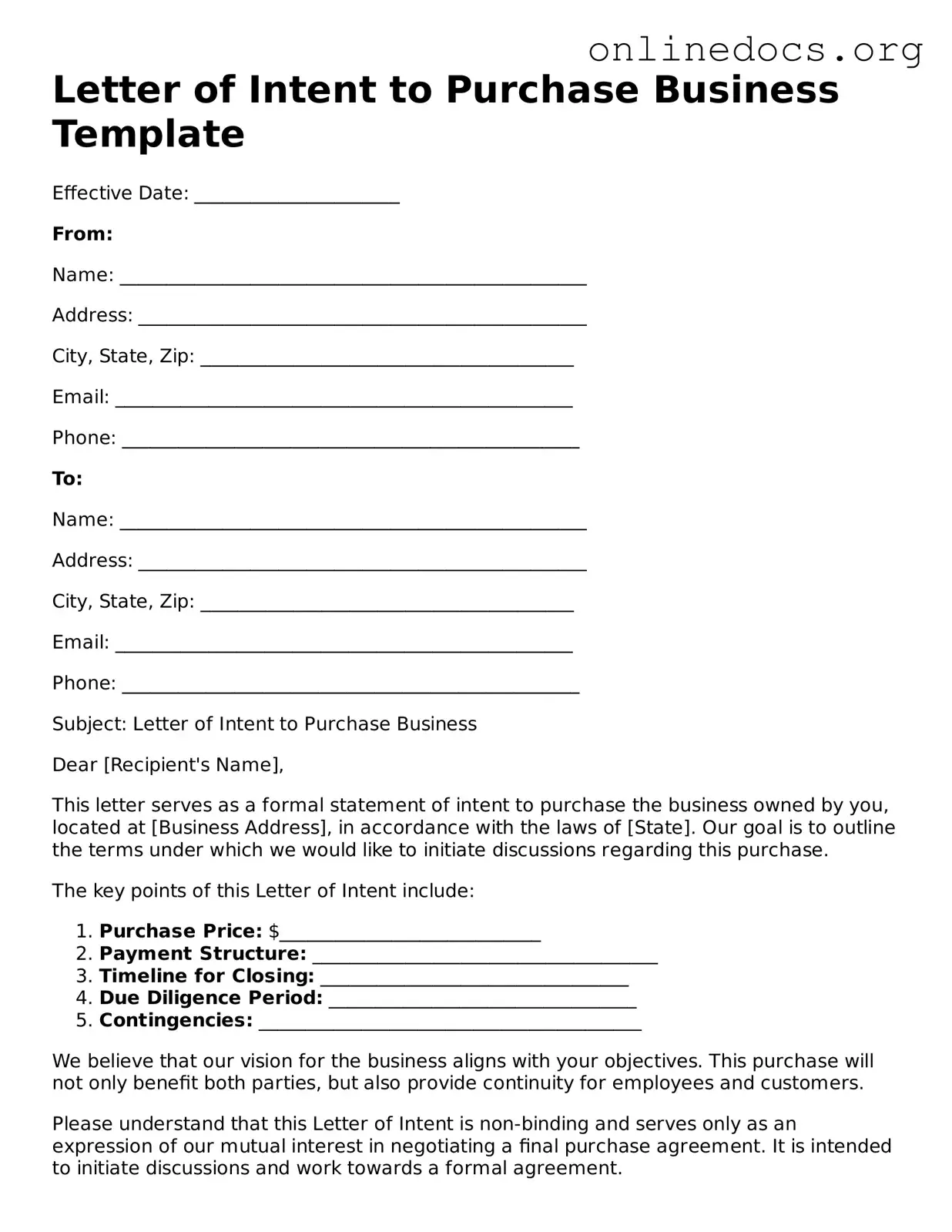The Letter of Intent (LOI) to Purchase Business serves as a preliminary agreement between a buyer and a seller, outlining the key terms of a potential transaction. It shares similarities with a Memorandum of Understanding (MOU). Both documents express the intentions of the parties involved without creating a legally binding contract. An MOU typically outlines broader terms and can cover multiple aspects of a relationship, whereas an LOI focuses specifically on the purchase of a business. Both documents set the stage for further negotiations and formal agreements.
Another document akin to the LOI is the Purchase Agreement. Unlike the LOI, which is often non-binding, a Purchase Agreement is a formal contract that details the final terms of the sale. It includes specifics such as the purchase price, payment terms, and conditions that must be met for the transaction to proceed. While the LOI serves as a starting point for discussions, the Purchase Agreement solidifies the commitment of both parties once negotiations conclude.
When considering the process of homeschooling in Alaska, it is crucial for parents to understand the requirements involved, including the submission of the Homeschool Letter of Intent. This document serves as a formal notification to the state, ensuring that the educational plan aligns with state regulations and helping to create a clear framework for the homeschool journey.
A Term Sheet is also comparable to the LOI. This document provides a summary of the key terms and conditions of a proposed agreement, often used in investment and financing contexts. Like the LOI, a Term Sheet is generally non-binding and serves to guide further discussions. However, it may include more detailed financial terms and conditions, making it a useful tool for investors and business partners to clarify their intentions before entering into a binding agreement.
The Non-Disclosure Agreement (NDA) shares a functional similarity with the LOI in that both documents are often exchanged during the negotiation process. An NDA protects sensitive information shared between parties, ensuring confidentiality as they discuss the potential sale. While the LOI outlines the intent to purchase, the NDA safeguards the details of that discussion, creating a secure environment for negotiation.
A Letter of Intent to Lease is another document that shares characteristics with the LOI for purchasing a business. This letter outlines the terms under which one party intends to lease property from another. While the LOI focuses on the sale of a business, both documents express intent and set forth preliminary terms. They serve as a foundation for drafting a more detailed and binding lease agreement or purchase contract.
The Letter of Intent to Merge is similar in nature to the LOI for purchasing a business. This document outlines the intentions of two companies to combine their operations, detailing preliminary terms and conditions of the proposed merger. Like the LOI, it is typically non-binding and serves as a precursor to more formal agreements, such as a Merger Agreement, which would finalize the terms of the merger.
A Confidentiality Agreement can also be likened to the LOI, as both are often utilized during negotiations. While the LOI expresses the intent to purchase, the Confidentiality Agreement ensures that any proprietary information exchanged during those discussions remains protected. This allows both parties to engage openly in negotiations without the fear of sensitive information being disclosed.
The Letter of Intent for Joint Venture represents another similar document. This letter outlines the intentions of two or more parties to collaborate on a specific project or business venture. Like the LOI for purchasing a business, it sets forth the preliminary terms and expectations of the parties involved. Both documents establish a framework for further negotiations and the eventual drafting of a more formal agreement.
Lastly, a Business Plan can be seen as related to the LOI in the sense that both documents may be used to communicate intentions and strategies. A Business Plan outlines the goals, strategies, and financial forecasts of a business, while the LOI communicates the intent to purchase. Although they serve different purposes, both documents are essential in the context of business transactions, providing clarity and direction for future actions.
